|
By Tzipi Horowitz-Kraus & Nils Muhlert The neuroimaging community has been very active in creating large-scale studies across a range of age groups, which have helped to tackle reproducibility issues. Most studies originate in the United States and Europe, although many other geographic regions are pursuing similar initiatives (for instance, you can read about initiatives in China in our blogpost). The Middle East, a 7.2m km2 region of diverse religions and cultures, has been very productive in the neuroimaging community in the past years. To get an update on how neuroimaging is changing in this region we asked brain mappers from the middle east to let us know of their projects and surveyed prominent researchers in different countries. We provide a brief overview of some of these activities in the Emirates, Israel, Saudi Arabia, and Turkey with the hope of future scientific collaboration between these countries. 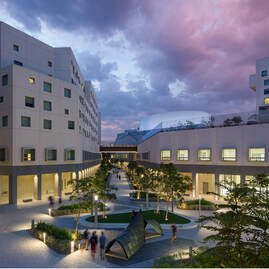 NYU Abu Dhabi NYU Abu Dhabi From the United Arab Emirates, Prof Liina Pylkkanen, Professor of Linguistics and Psychology at New York University, NYC, and Co-Director of the Neuroscience of Language Laboratory at NYU Abu Dhabi (NYUAD): “New York University Abu Dhabi (NYUAD) houses both an MEG and an MRI lab, with several individual research groups as users. There are no large-scale local MRI databases yet, but NYUAD does have several interdisciplinary collaborations both within the institution and with local hospitals, as well as internationally with, for example, the US, UK and China.” 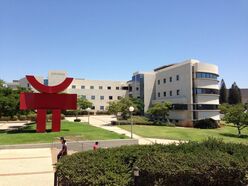 Tel Aviv University Tel Aviv University From Israel, Dr. Daniel Barazany, head of the Strauss computational neuroimaging center at Tel Aviv University: “Our centre has been particularly active over the last 4 years, with over 60 studies performed by dozens of investigators from all universities in Israel. There were also a few relatively large-scale MRI studies including 200-400 participants, some of which included sophisticated anatomical sequencing techniques. Most studies are done with collaborations worldwide, mostly with the US and European MR centers. Currently, there is no open-source database available in Israel, however, the neuroimaging data we acquire is usually uploaded to existing open-source databases (such as OpenNeuro).” 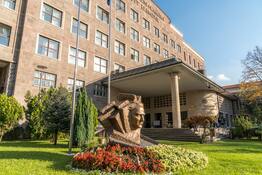 Ankara University Ankara University From Turkey, Prof. Dr. Metehan Çiçek, Neurotechnology Center of Excellence (NÖROM Ankara University): “We’re working not only on neuroimaging but also cellular/animal model studies in neuroscience and neurotechnology studies including robotics. Our new centre has multiple educational sessions and international monthly speakers, so we’re aiming to increase activity across neuroscience more generally, but also to generate big data to identify reliable biomarkers for health and disease.” 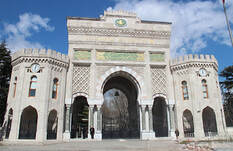 Istanbul University Istanbul University In addition, Dr Tamer Demiralp (Istanbul University) noted that many older universities with medical faculties in Turkey provide excellent training opportunities in Neuroanatomy, Neurophysiology and Neurosciences, and Technical Universities host diverse scientists working in computational and cognitive (neuro)science and biomedical signal-image processing. Istanbul University has installed the first “research-oriented” 3T MRI system in Turkey, alongside EEG/ERP labs + TMS and tDCS setups. Researchers in Istanbul collaborate in EU funded (French) SME projects on biomarker development for Alzheimer’s Disease, ENIGMA projects, and with the German Center for Neurodegenerative Disorders. A challenge within Turkey is to encourage the national funding agencies to provide more financial support for large neuroimaging infrastructures - and there are plans to do so, to foster greater collaboration between Istanbul and NOROM in Ankara. 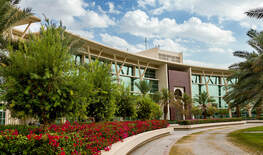 Alfaisal University, Riyadh Alfaisal University, Riyadh Lastly, from Saudi Arabia: Dr Reem Alyahya, Consultant Speech and Language Pathologist (King Fahad Medical City) and Adjunct Assistant Professor (Alfaisal University, Riyadh): “MRI and Neuroimaging have been mainly utilized in Saudi Arabia in clinical settings. We don’t yet have large collaborative projects with neighboring countries or open-source databases. But more recently, there has been an interest in initiating the use of MRI and other neuroimaging modalities for research purposes. King Fahad Medical City in Riyadh is currently establishing a neuroscience research department with a state-of-the-art multinuclear MRI facility, the first in the Middle East. Large-scale MRI studies will be conducted in this facility, but they are currently still in the planning phase. King Fahad Medical City also uses Magnetoencephalography (MEG) for clinical purposes. We initiated the use of the MEG system to investigate different neurological and psychiatric conditions including Parkinson’s disease, epilepsy and depression.” -- Recent years in the Middle East have sometimes been turbulent. Scientific collaborations, both nationally and internationally, offer one way to promote dialogue between people from diverse backgrounds. As always there are challenges to secure the level of funding needed for multi-site projects, but these well-equipped centers with state of the art neuroimaging research facilities, as well as others in Jordan, Egypt and throughout the Middle East, can provide the technology needed for these collaborations, and have the potential to contribute substantially to human neuroscience.
0 Comments
Your comment will be posted after it is approved.
Leave a Reply. |
BLOG HOME
Archives
January 2024
|
 RSS Feed
RSS Feed